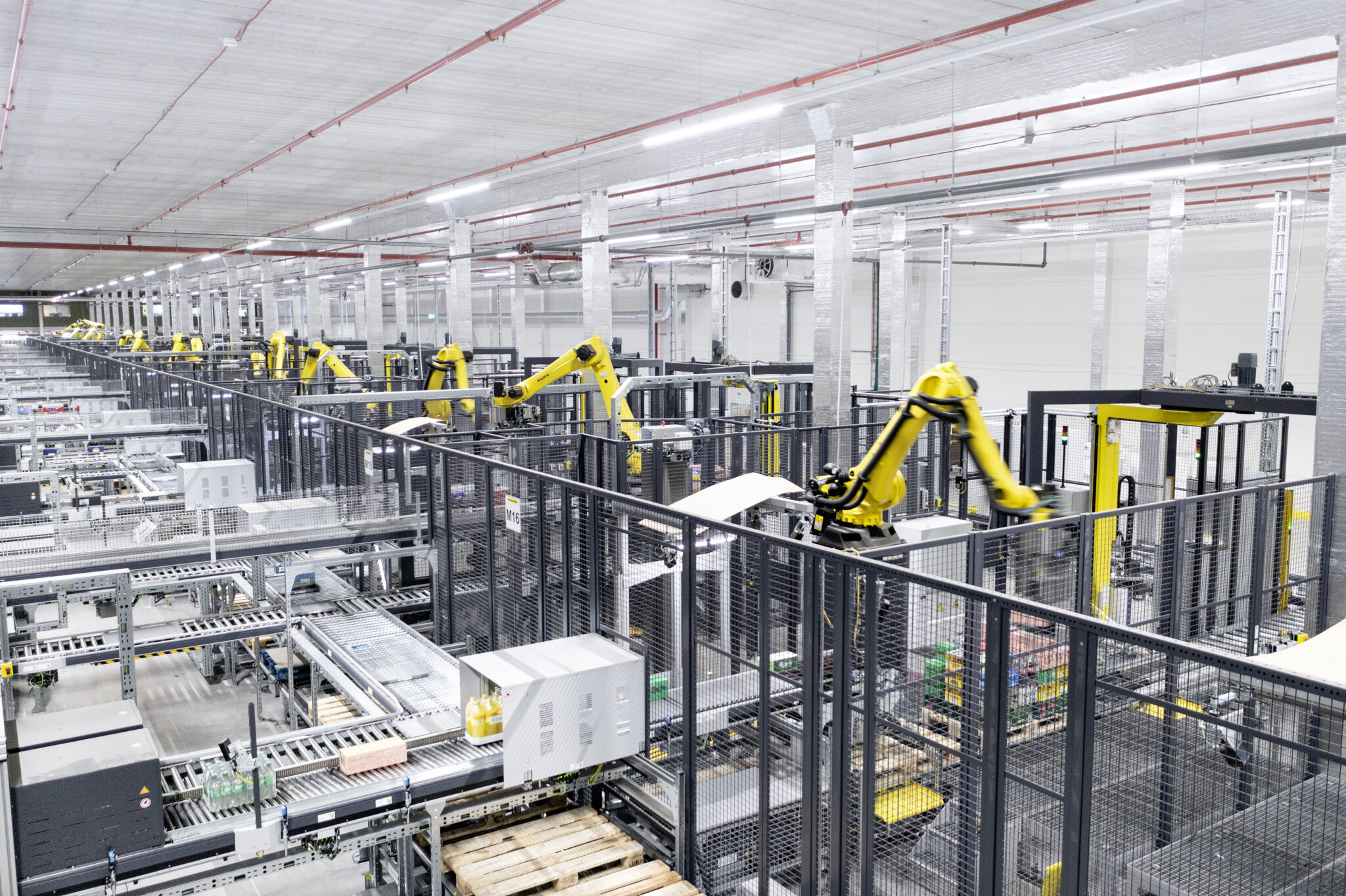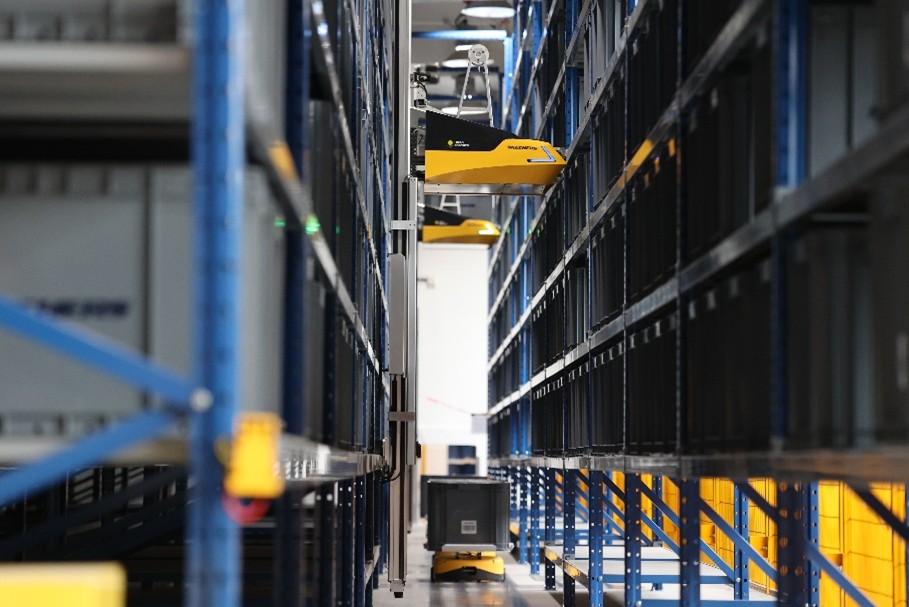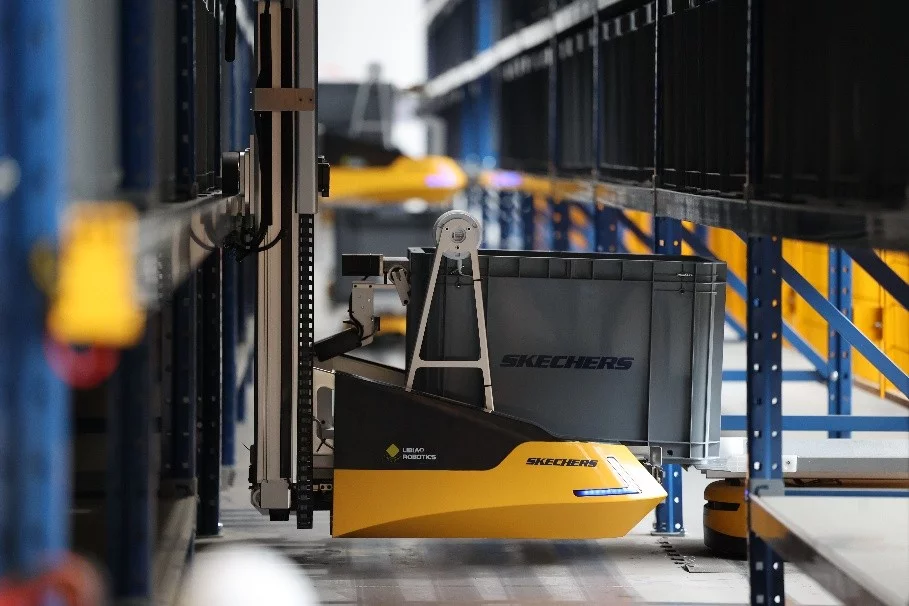Automation in intralogistics has developed rapidly in recent years. More and more companies are relying on autonomous mobile robots (AMR) and driverless transport systems (AGV) to leverage efficiency potential. Processes are becoming more flexible, material flows optimized and manual work reduced. In theory, this means continuous availability and maximum productivity. But in practice, an unforeseen hurdle quickly becomes apparent: The energy supply.
While investments in automation are usually aimed at increasing throughput, the way in which robots are charged often leads to unexpected bottlenecks. Charging breaks mean downtime, charging zones take up valuable space and when fleets of different manufacturers are used, the infrastructure becomes increasingly complex. “Many companies initially underestimate the impact that the charging strategy has on the efficiency of their automation,” explains Julian Seume, Director Wiferion – a PULS business unit. “It’s not just about supplying the robots with energy – the way in which they are charged determines how smoothly and economically an entire material flow functions.”
Downtime and space consumption: an often overlooked cost factor in intralogistics
If companies only realize during operation how strongly charging processes influence the efficiency of their AMR fleets it is already too late. Conventional charging concepts rely on vehicles moving to charging zones independently after a certain operating time and remaining there for a longer period of time. This results in idle times that are often not fully included in the original planning. It becomes particularly problematic in highly frequented environments, such as in e-commerce or in production logistics, where delays can quickly affect the entire supply chain.
In addition to downtime, charging zones are an often overlooked cost factor. Any space used for charging is not available for value-adding processes. “In many warehouse and production environments, space is a scarce commodity. Companies need to ask themselves whether they really want to use this space for charging their vehicles – or whether there are better ways,” says Seume.
Another problem arises when several robots from different manufacturers are in use. As many manufacturers use their own charging systems, a separate infrastructure must be set up for each technology. This not only increases installation costs, but also makes scaling the fleet more complex and expensive.
How companies can strategically integrate energy supply into their automation
Anyone investing in a larger AMR fleet or wanting to expand existing systems should not only focus on the energy supply when bottlenecks occur. Choosing the right charging strategy can determine whether automation is economically viable.
One way to maximize the productivity of the robot fleet is to integrate charging into the ongoing process. Instead of taking robots out of operation for long periods of time, the energy consumption is spread over many short charging intervals. For example, vehicles can recharge their batteries during short stops at transfer stations or picking stations. This strategy, also known as in-process charging, prevents unnecessary downtime and ensures that the vehicles remain ready for use almost continuously. “In-process charging makes it possible to charge the robots whenever they are stopped for a short time anyway – at a transfer station, for example. This drastically reduces downtimes and ensures more efficient use of the fleet,” explains Seume.

A recent study by MHP – A Porsche Company has shown that companies that rely on an optimized charging infrastructure can increase the productivity of their driverless transport systems by up to fifty percent. In addition, companies that have integrated charging into their processes have been able to reduce the size of their fleets, as no additional vehicles had to be kept available for charging breaks.
Another important aspect is scalability. If you want to develop your automation flexibly, you should opt for a charging solution that works across all manufacturers at an early stage. Different charging systems from different providers make it difficult to integrate new vehicles into an existing fleet. A standardized infrastructure, on the other hand, makes it possible to operate heterogeneous fleets with the same charging infrastructure, which reduces operating costs and increases long-term flexibility. “Many of our customers have found that their old charging infrastructure is becoming an obstacle to growth. Those who rely on a cross-manufacturer solution avoid these problems and remain flexible in the long term,” says Seume, highlighting the problem.
When it is worth switching to a new charging strategy
Many companies that initially started with smaller AMR fleets are faced with the question of whether they should adapt their charging infrastructure after a certain period of operation. One car manufacturer, for example, found that its planned fleet expansion could not be realized without a more efficient charging infrastructure. The existing solution with permanently assigned charging zones led to increasing bottlenecks and unnecessary idle times.
By switching to a process-integrated charging system, the company was not only able to increase the operating time of the robots by more than thirty percent, but also free up valuable space that was previously reserved for charging stations. As no additional space was required for charging, parts of the storage areas could be used for additional production capacity. At the same time, maintenance costs were significantly reduced as mechanical contacts were no longer used. “There is a clear point at which companies realize that they need to rethink their charging infrastructure. This usually happens when the fleet grows and inefficient charging processes can no longer be ignored,” says Seume.
Such experiences show that the right charging strategy is not just a technical optimization, but a business decision with long-term effects. Anyone investing in a new AMR fleet today should be aware that the charging infrastructure is just as crucial to success as choosing the right vehicles and control systems.
The energy supply is decisive for automation success
Automation is not an end in itself, but should make processes more efficient and economical. If you don’t think strategically about energy supply from the outset, you risk bottlenecks and unnecessary operating costs negating the expected efficiency gains. Companies that rely on seamless charging integration benefit from maximum uptime, lower space costs and greater flexibility when scaling their AMR fleets. “The right charging strategy is not just a question of technology – it is a decisive factor for the economic success of an automation project,” emphasizes energy expert Seume. Choosing the right charging strategy should therefore receive just as much attention as the selection of the robots themselves.
similar news
Innovative Battery Charging Technology at LogiMAT










